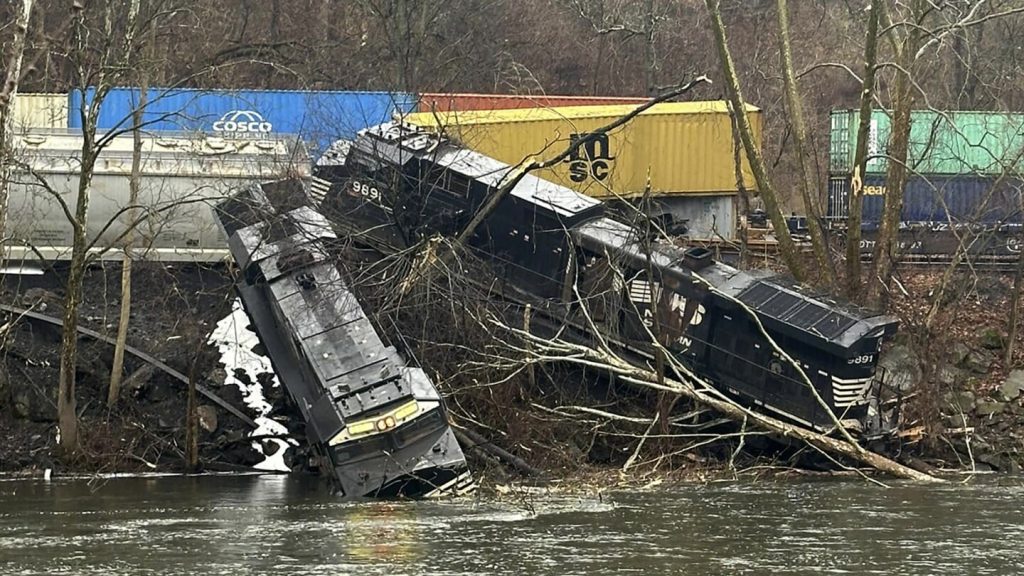The recent collision of three Norfolk Southern trains in Pennsylvania has brought attention to the limitations of the positive train control system designed to prevent such crashes. The system was not triggered to stop the trains in this incident, as it was unable to detect the stopped train or the blockage caused by derailed cars. This highlights the need for improved safety measures in the rail industry, as the positive train control system only works in certain circumstances.
The collision occurred in Lower Saucon Township along the Lehigh River, when an eastbound train crashed into a stopped train after passing a restricted speed signal. The braking system was not activated as there was no stop signal, allowing the train to continue until the collision. The third train arrived less than a minute later and smashed into the derailed cars blocking its track, with the braking system unable to prevent the crash due to its limitations in detecting obstructions on the tracks.
The derailment resulted in damage to six railcars, including those carrying ethanol and butane residue, along with two locomotives that ended up in the river. Fortunately, no hazardous materials were spilled other than diesel leaking from the locomotives. The seven crew members on board the three trains sustained minor injuries, highlighting the potential dangers faced by railroad workers in such incidents.
NTSB spokesman Keith Holloway noted that preliminary information suggests the limitations of the positive train control system played a role in the accident. The final report detailing the cause of the collision is expected to take more than a year to complete, with the investigation focusing on the railroad’s rules, procedures, and training practices. The incident has raised concerns about Norfolk Southern’s safety practices, especially since a previous derailment in Ohio in 2023 raised calls for industry-wide changes.
The NTSB investigation will also consider factors such as weather conditions and visibility at the time of the crash, as federal regulations require crews to slow down in restricted speed areas to ensure they can stop within half the distance they can see. The collision occurred during light rain, but it is unclear whether this affected the crew’s visibility. Safety expert Chris Barkan emphasized the importance of proper observation of restricted speed areas to avoid collisions, as many incidents have occurred due to crews failing to follow these guidelines.
Overall, the Pennsylvania train collision highlights the challenges faced by the rail industry in implementing effective safety measures to prevent accidents. The limitations of the positive train control system in detecting obstructions on the tracks raise concerns about the effectiveness of current safety protocols. The NTSB investigation will provide valuable insights into the causes of the crash and may lead to recommendations for improving safety practices in the railroad industry.


